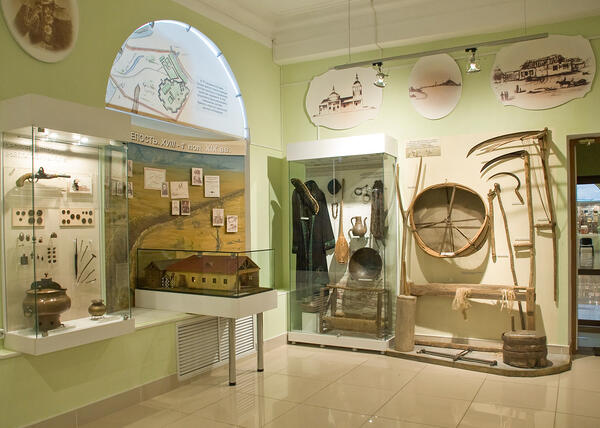The tour of the museum begins with the ‘Great Steppe’ archaeological room. This room contains a display covering the various stages of human settlements in the eastern part of Orenburg region, from the early Paleolithic era to the late Bronze Age.
It is followed by a display dedicated to the foundation of the fortress on the River Or, and the early stages of its construction and development. The core is the exhibition is formed of household items from the XVIII and XIX Centuries: tools, traditional costumes of the various nations living within the limits of the fortress.
This is followed by a exhibits that tell the story of the economic, spiritual and political development of Orsk, which acquired the status of chief town in a district in 1865. The permanent exhibition contains a room dedicated to the history of the Civil War in the Orsk district, a room dedicated to the city’s traumatic transition from a provincial town to a manufacturing center, as part of the Soviet regime’s aggressive industrialization drive, and, naturally, a room dedicated to the Great Patriotic War. The exhibition ends with a display telling the story of how Orsk developed during the post-war period, into the city we see today.
It is followed by a display dedicated to the foundation of the fortress on the River Or, and the early stages of its construction and development. The core is the exhibition is formed of household items from the XVIII and XIX Centuries: tools, traditional costumes of the various nations living within the limits of the fortress.
This is followed by a exhibits that tell the story of the economic, spiritual and political development of Orsk, which acquired the status of chief town in a district in 1865. The permanent exhibition contains a room dedicated to the history of the Civil War in the Orsk district, a room dedicated to the city’s traumatic transition from a provincial town to a manufacturing center, as part of the Soviet regime’s aggressive industrialization drive, and, naturally, a room dedicated to the Great Patriotic War. The exhibition ends with a display telling the story of how Orsk developed during the post-war period, into the city we see today.
40 exhibits for recognition are marked with AR stickers.

